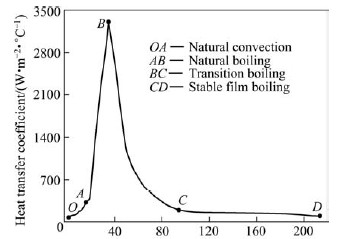Abstract: Combining with the low temperature material properties and the boiling heat transfer coefficient of specimen immersed in the liquid nitrogen, a numerical model based on metallo-thermo-mechanical couple theory was established to reproduce the deep cryogenic treatment (DCT) process of a newly developed cold work die steel Cr8Mo2SiV (SDC99). Moreover, an experimental setup for rapid temperature measurement was designed to validate the simulation results. The investigation suggests that the differences in temperature and cooling rate between the surface and core of specimen are very significant. However, it should be emphasized that the acute temperature and cooling rate changes during DCT are mainly concentrated on the specimen surface region about 1/3 of the sample thickness. Subjected to DCT, the retained austenite of quenched specimen continues to transform to martensite and finally its phase volume fraction reduces to 2.3%. The predicted results are coincident well with the experimental data,which demonstrates that the numerical model employed in this study can accurately capture the variation characteristics of temperature and microstructure fields during DCT and provide a theoretical guidance for making the reasonable DCT procedure.
1 Introduction
Deep cryogenic treatment (DCT) is an additive process to the conventional heat treatment of cold work tool steel and usually involves cooling to liquid nitrogen temperature around −196 °C [1]. This technique has been proven to be efficient in improving the physical and mechanical properties of the various materials such as wear, abrasion, erosion/corrosion resistivity, durability and stability [2,3]. However, DCT is a complex process involving thermal, metallurgical and mechanical phenomena. It is still difficult, even impossible to investigate in situ all these physical phenomena correctly and efficiently with the current experimental test systems.
Recently, some mathematical models describing the coupled interactions among the temperature field,the microstructure field and the stres−strain field during the quenching are built to provide a theoretical guidance to the heat treatment [4,5]. Aside from the mathematical models, to perform the simulation of DCT process, there are two extremely important characteristics of material that must be obtained. 1) The low temperature material properties. Due to the limitations of the test conditions,there is a serious lack of the low temperature physical and mechanical properties of material and the existing ones also lack sufficient accuracy to meet the requirements of simulation. 2) The boiling heat transfer coefficient between the specimen surface and the liquid nitrogen. It is very difficult to accurately measure the boiling heat transfer coefficient by experimental methods.
Due to these factors, the numerical simulation of DCT has not yet received widespread attention. So far, most of the available researches [6−8] are still limited to estimate the temperature field evolution during DCT and neglect the phase transformation and its latent heat effects.
``````
